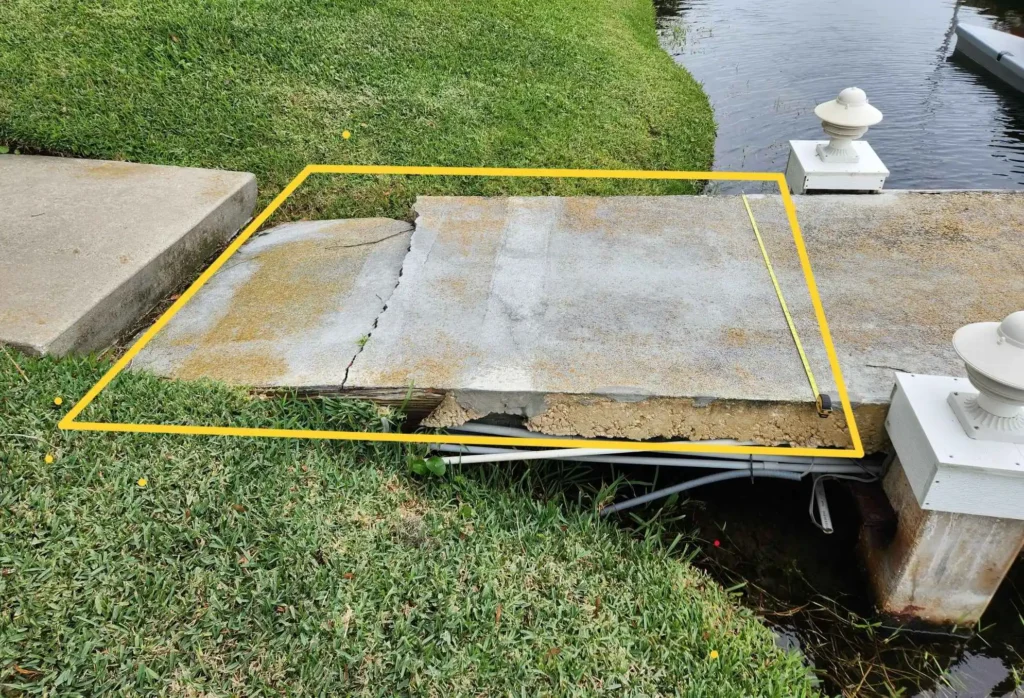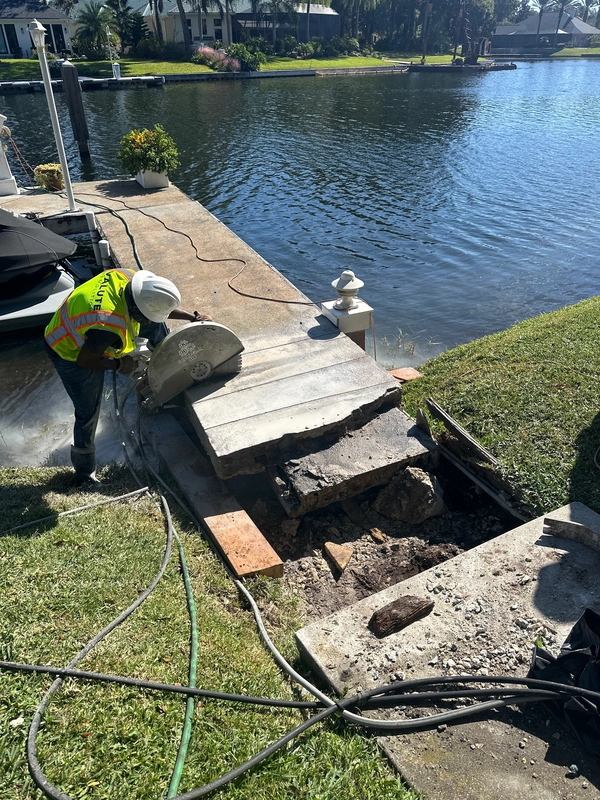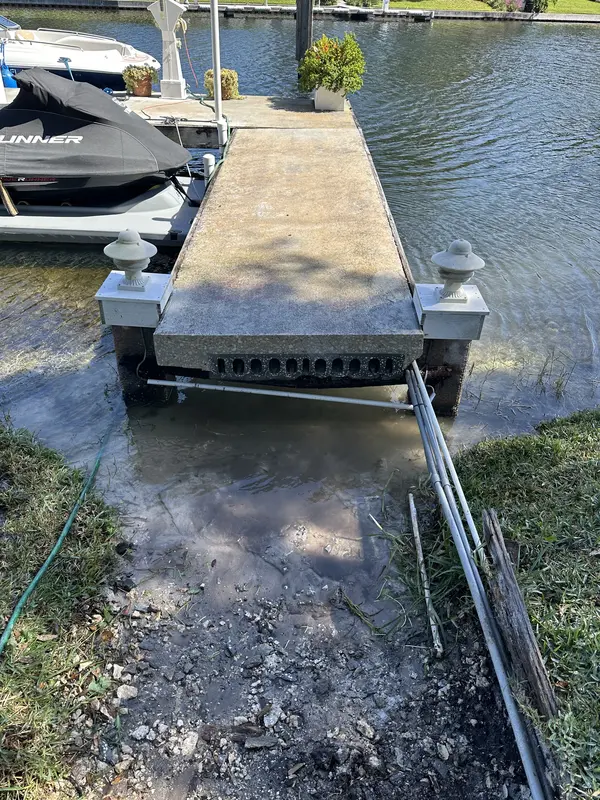Cutting Concrete vs. Solving Problems: A Pier Demolition Story
October 31 2025Working around water and steel always brings surprises.
This pier demolition started as a simple concrete cutting job — just follow the yellow line and remove a section of slab. But like most structures near saltwater, what you see from the top rarely tells the full story underneath.
The Initial Scope
We received a straightforward request for pier demolition: remove a section of concrete slab along a marked perimeter.
The scope came with a single site photo showing the removal area outlined in yellow. Half of the slab had already cracked and broken off, leaving a jagged line through what remained.

The plan was simple — show up, perform the concrete cutting along the marked line, and pull out the damaged section in one piece.
On paper, it looked like a standard pier demolition job.
The Field Assessment Changes Everything
Once we arrived and inspected the structure up close, the full scope of the challenge became clear.
The supporting beam underneath the concrete slab showed serious corrosion and structural deterioration — damage hidden from above.
Adding to the complexity: electrical conduits ran through the removal area. These had to remain intact throughout the demolition. That meant zero uncontrolled movement, zero slab drop, and zero mistakes.
If we followed the original plan — cutting the full perimeter and lifting out the slab as one large piece — the weight alone could overload what was left of the beam’s capacity. And if that beam failed mid-cut, the entire section could collapse unpredictably, damaging the conduits below.
The risk is unacceptable.
The Solution: Precision Concrete Cutting
Rather than forcing the plan to fit the conditions, we adapted our approach on site.
Instead of one large cut and lift, we executed controlled, sequential slice cutting to reduce stress on the compromised beam.
Our Field Approach:
- Sequential slice cutting: Divided the removal zone into smaller segments and cut one section at a time.
- Load distribution control: Reduced stress on the corroded beam by keeping each piece lightweight.
- Controlled handling: Managed each piece carefully to avoid shifting debris near conduits.


Yes, it took more time — more cuts, more lifts — but every move was intentional and safe.
The corroded beam remained stable the entire time, and not a single conduit was disturbed.
Why Professional Pier Demolition and Concrete Cutting Matter
This project underscored a simple truth: in demolition, success comes from problem-solving, not just removal.
Every structure hides something the paperwork doesn’t show. A single photo can’t reveal corrosion, internal damage, or shifting load paths. That’s why experienced concrete cutting and demolition crews bring more than tools — they bring judgment.
What Sets Us Apart:
- Field-based structural awareness
- Real-time risk assessment
- Adaptability under changing site conditions
- Experience with waterfront and corrosion-affected structures
- Working efficiently without compromising safety
The Outcome
The segmented cutting plan worked exactly as intended.
The concrete slab was removed cleanly, the corroded beam remained stable, and the electrical infrastructure below stayed untouched.
The entire operation finished without incident — and with almost no additional time added compared to the original plan.
This pier demolition job reinforced what we see again and again: the best plan is often the one you adjust after you see the structure.


Final Thoughts
Every demolition project tells a story — and this one was about slowing down, observing, and thinking before cutting.
That’s what separates cutting concrete from solving problems.

